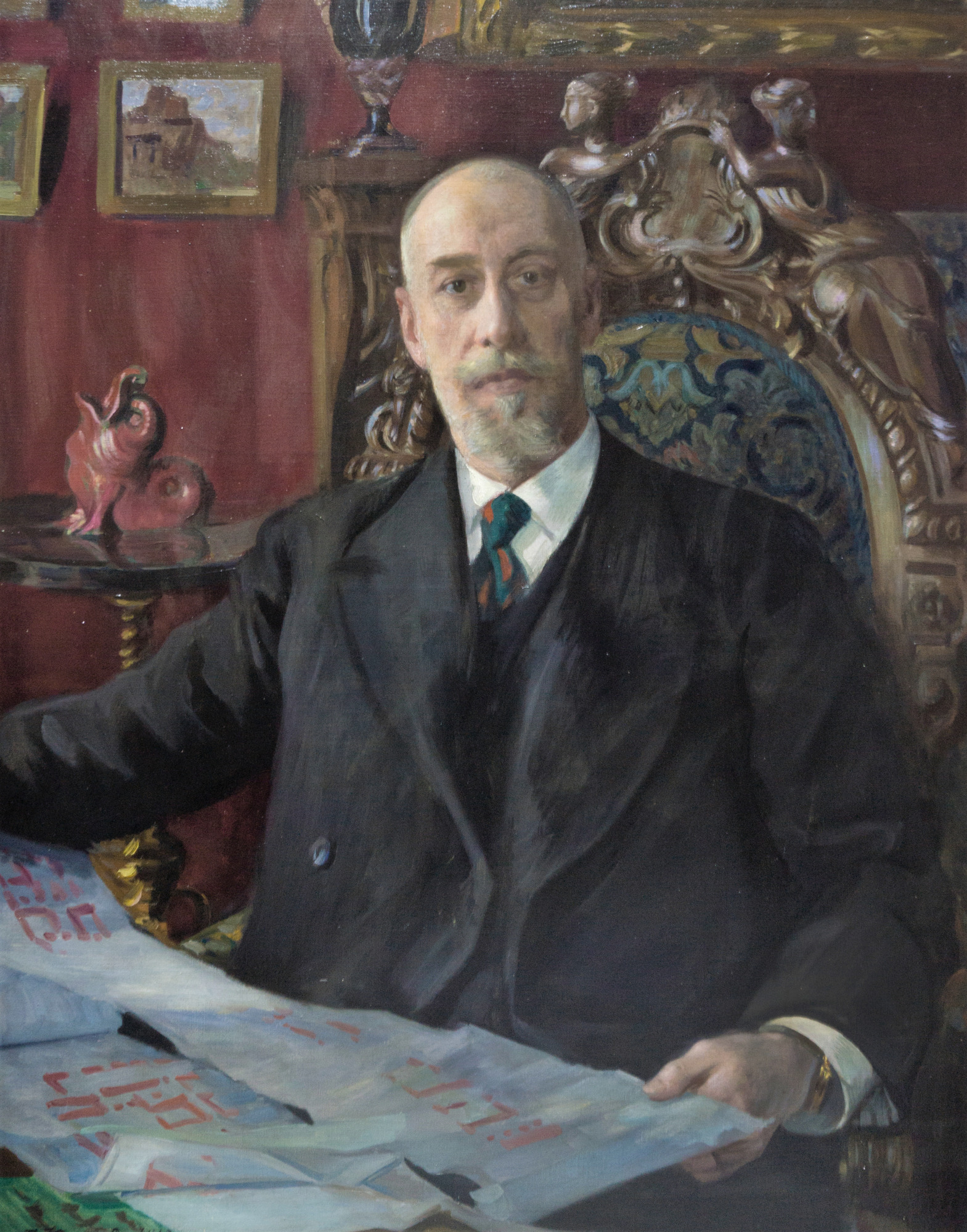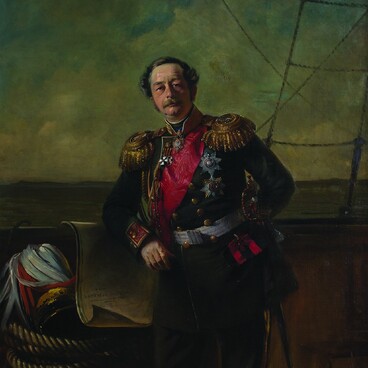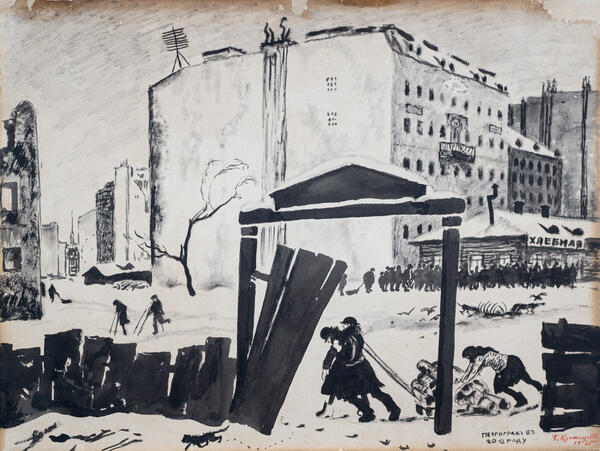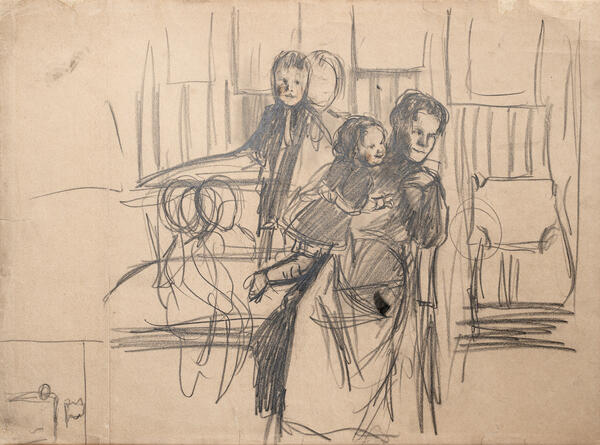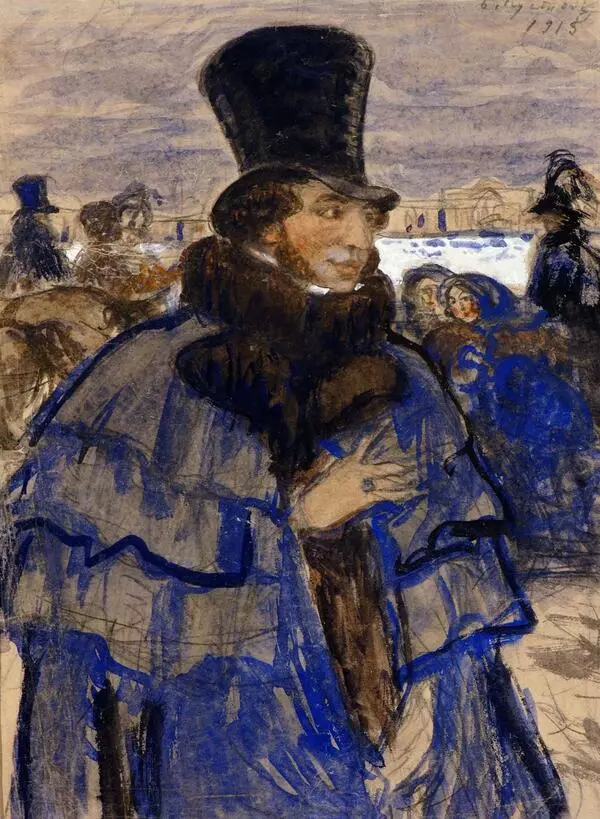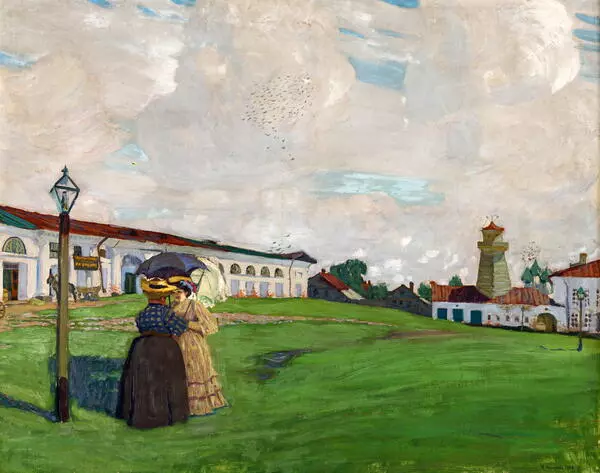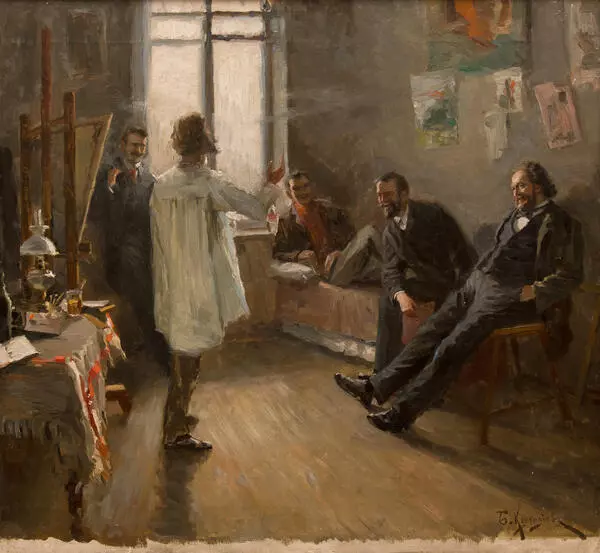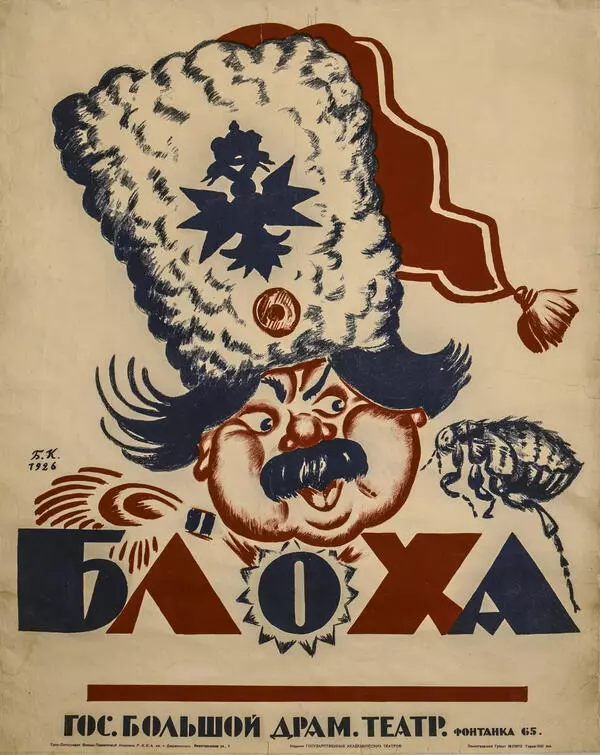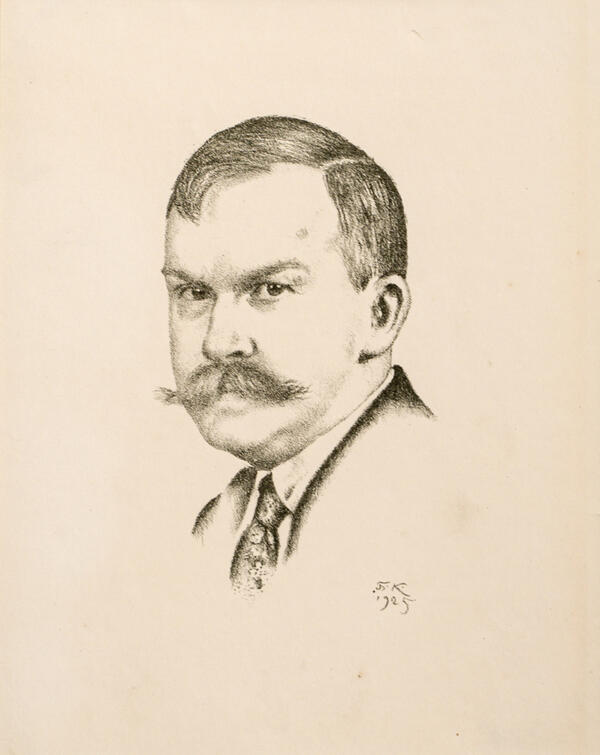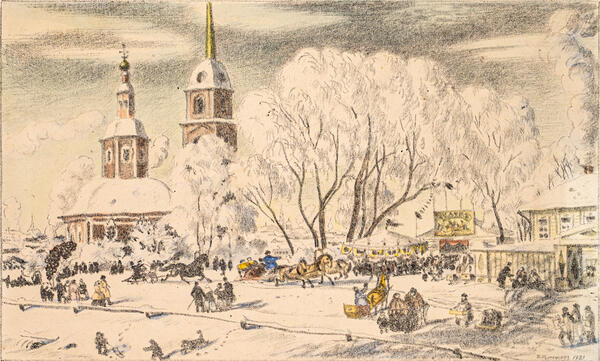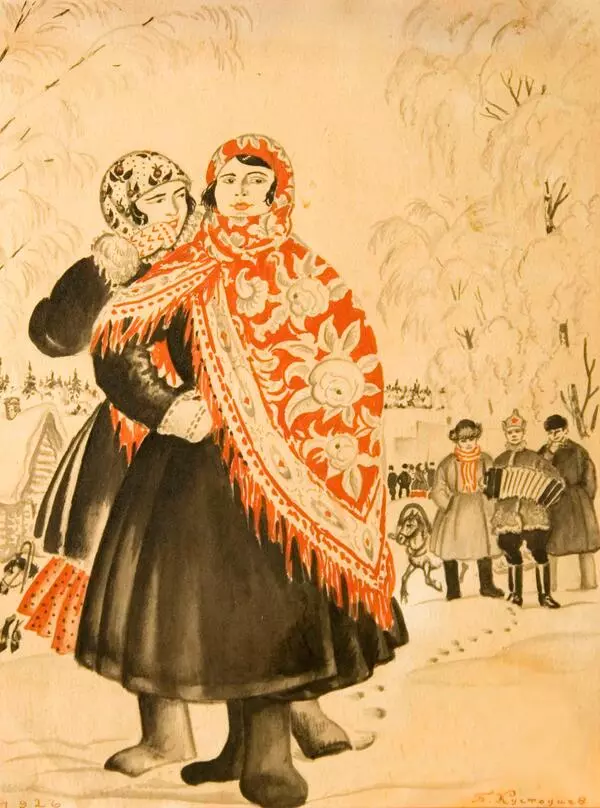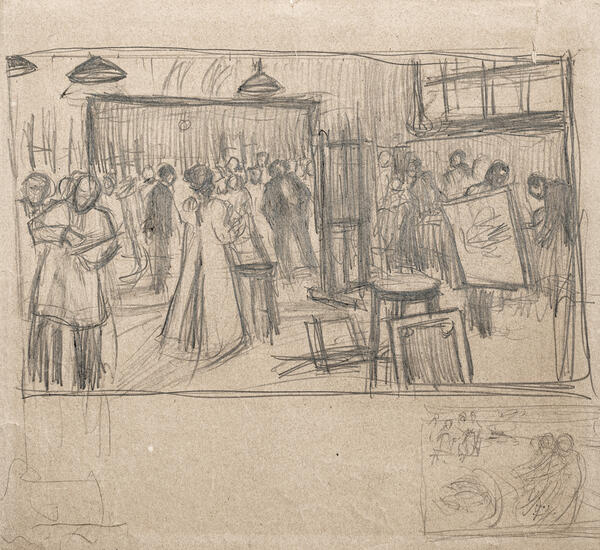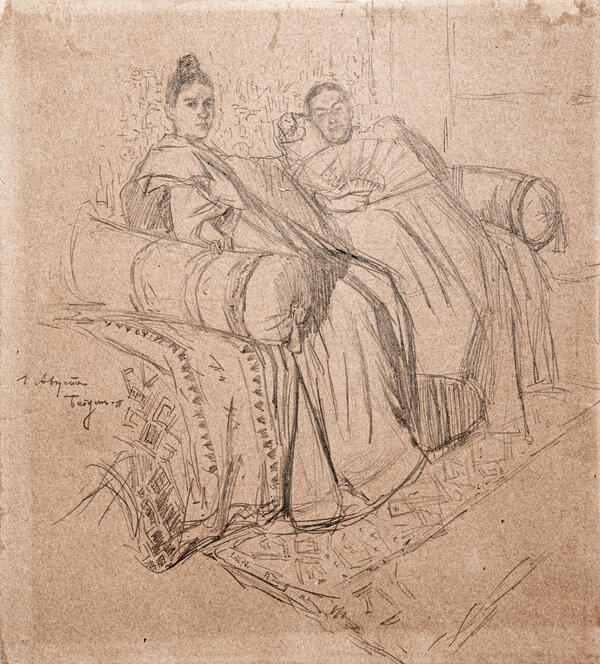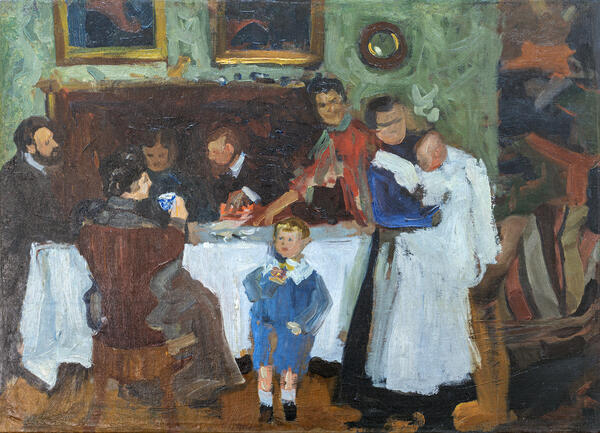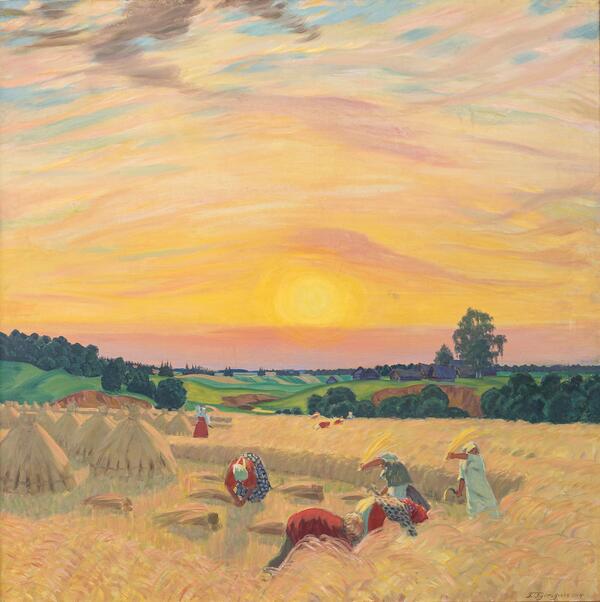Boris Kustodiev studied at the Academy of Arts in St. Petersburg, and the celebrated artist Ilya Repin, who was his teacher, thought very high of his student. In the early 1900s, Kustodiev already became famous as a portrait painter. In 1901, Repin invited his best pupil to participate in creating a huge painting ‘The ceremonial meeting of the State Council on May 7, 1901’. The young artist painted 25 portrait studies and the right side of the canvas. Later, Kustodiev wanted to abandon Repin’s realism and began searching for his own unique painting style.
The portrait depicts Nikolai von Meck, a representative of the “railway kings” dynasty, which became one of the country’s wealthiest families in the wake of the ‘railway fever’ in the 1860s–1870s. Nikolai was successful at keeping his father’s legacy — the development of the railway network in Russia — and became a prominent industrialist. Without any special engineering education, he learnt all the minutest issues of the new business on his own. He started with the basics: he worked as a fireman in a depot, a clerk, an engine driver. Nikolai von Meck was the permanent chairman of the board of the Moscow-Kazan railway. His efforts led to increasing the length of the railroad more than tenfold.
The von Meck family patronized Russian musicians and artists. Nikolai’s mother Nadezhda Filaretovna was a patron of the arts and provided financial support to Pyotr Tchaikovsky. Her help enabled the composer to leave his studies at the conservatory and concentrate on composing music. Nikolai von Meck was married to Anna Davydova, Tchaikovsky’s niece, coming from a noble family famous because of the ancestors who took part in the Decembrist revolt against Tsar Nicholas I in December 1825. Tchaikovsky attended their wedding and later enjoyed visiting the Meck couple, when he came to Moscow or the Kopylovo estate. Nikolai von Meck collected paintings and was acquainted with many eminent artists. For many years he helped Mikhail Vrubel — most of the painter’s works entered the collection of his patron.
Nikolai von Meck is depicted sitting at a table in an antique armchair decorated with sculpture. In front of him are some technical drawings. His hands are comfortable, the right one is cut off by the edge of the canvas. The wall behind the sitter is decorated with numerous paintings that extend beyond the pictorial space of the portrait. On the shelf is the lower part of a fine antique vase. This choice of the composition — the ‘cropping’ and cutting of the surrounding details — creates the feeling that the sitter is present.
The portrait depicts Nikolai von Meck, a representative of the “railway kings” dynasty, which became one of the country’s wealthiest families in the wake of the ‘railway fever’ in the 1860s–1870s. Nikolai was successful at keeping his father’s legacy — the development of the railway network in Russia — and became a prominent industrialist. Without any special engineering education, he learnt all the minutest issues of the new business on his own. He started with the basics: he worked as a fireman in a depot, a clerk, an engine driver. Nikolai von Meck was the permanent chairman of the board of the Moscow-Kazan railway. His efforts led to increasing the length of the railroad more than tenfold.
The von Meck family patronized Russian musicians and artists. Nikolai’s mother Nadezhda Filaretovna was a patron of the arts and provided financial support to Pyotr Tchaikovsky. Her help enabled the composer to leave his studies at the conservatory and concentrate on composing music. Nikolai von Meck was married to Anna Davydova, Tchaikovsky’s niece, coming from a noble family famous because of the ancestors who took part in the Decembrist revolt against Tsar Nicholas I in December 1825. Tchaikovsky attended their wedding and later enjoyed visiting the Meck couple, when he came to Moscow or the Kopylovo estate. Nikolai von Meck collected paintings and was acquainted with many eminent artists. For many years he helped Mikhail Vrubel — most of the painter’s works entered the collection of his patron.
Nikolai von Meck is depicted sitting at a table in an antique armchair decorated with sculpture. In front of him are some technical drawings. His hands are comfortable, the right one is cut off by the edge of the canvas. The wall behind the sitter is decorated with numerous paintings that extend beyond the pictorial space of the portrait. On the shelf is the lower part of a fine antique vase. This choice of the composition — the ‘cropping’ and cutting of the surrounding details — creates the feeling that the sitter is present.
